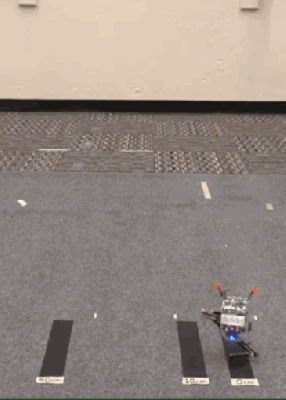Sticking the perfect landing can take years of practice for a human gymnast, and it seems the same is true for little monopedal jumping robots. Salto-1P, an old acquaintance here on Hackaday, always needed to keep jumping to stay upright. With some clever control software improvements, it can now land reliably on an area the size of a coin, and then stay there. (Video after the break)
[Justin Yim] from the UC Berkeley’s Biomimetics Lab has been working on Salto for the past four years, and we’ve covered it twice before. Attitude control is handles by a combination of propeller thrusters for roll and yaw, and a reaction wheel for pitch.While it was already impressive before, it had a predictable landing area about the size of a dinner plate.
The trick to the perfect landing is a combination of landing angle, angular velocity and angular momentum. Salto can only correct for ±2.3° of landing angle error, because it doesn’t have a second foot to catch itself when something goes wrong. Ideally the robot’s angular velocity and momentum should be as close as possible to 0 at takeoff, which gives the reaction wheel maximum control authority in flight, as well as on landing. Basically a well executed takeoff directly influences the chances of a good landing. [Justin] does an excellent job explaining all this and more on the project’s presentation video.
What is the practical application of Salto, you may ask? Search and rescue of course.
Successfully controlling a robot like Salto is all about control theory. If you want to learn more about the field, you can check out some online lectures on the fundamentals, or get your feet wet with self-blancing robots.
Thanks [Qes] for the tip!
Source:: Hackaday

